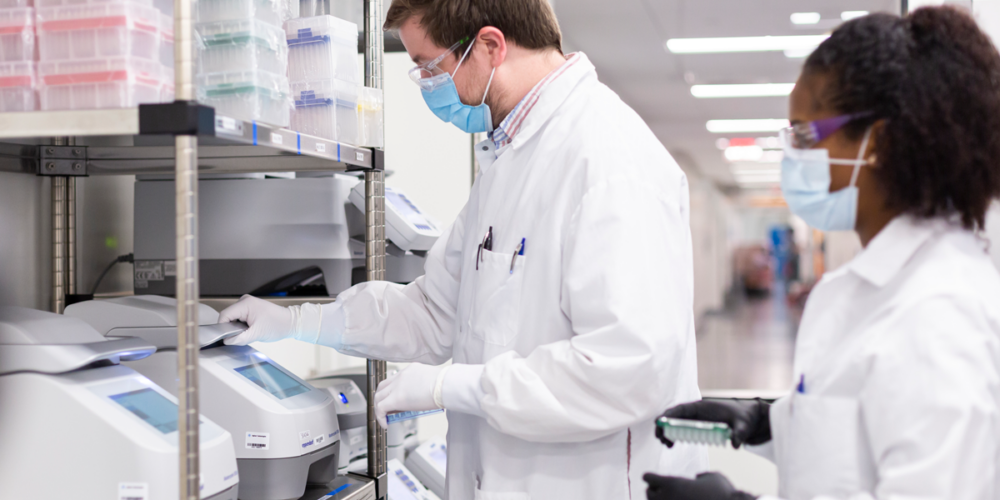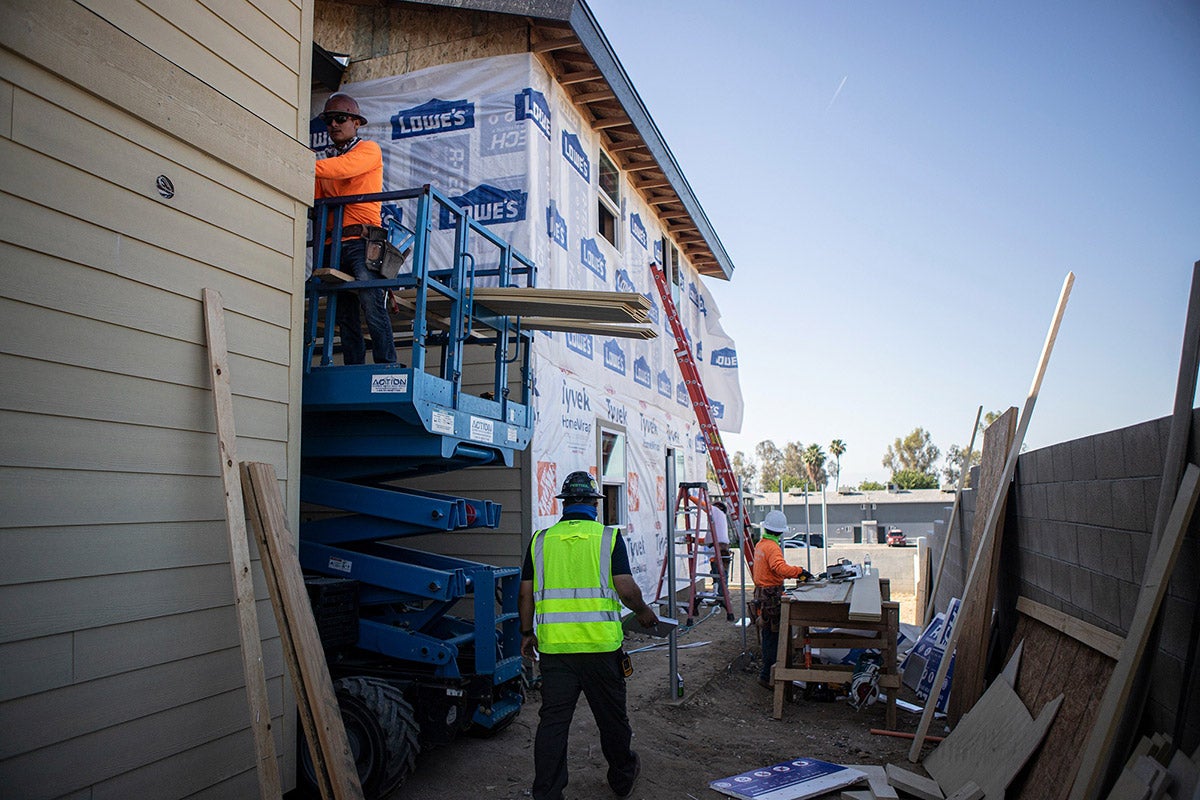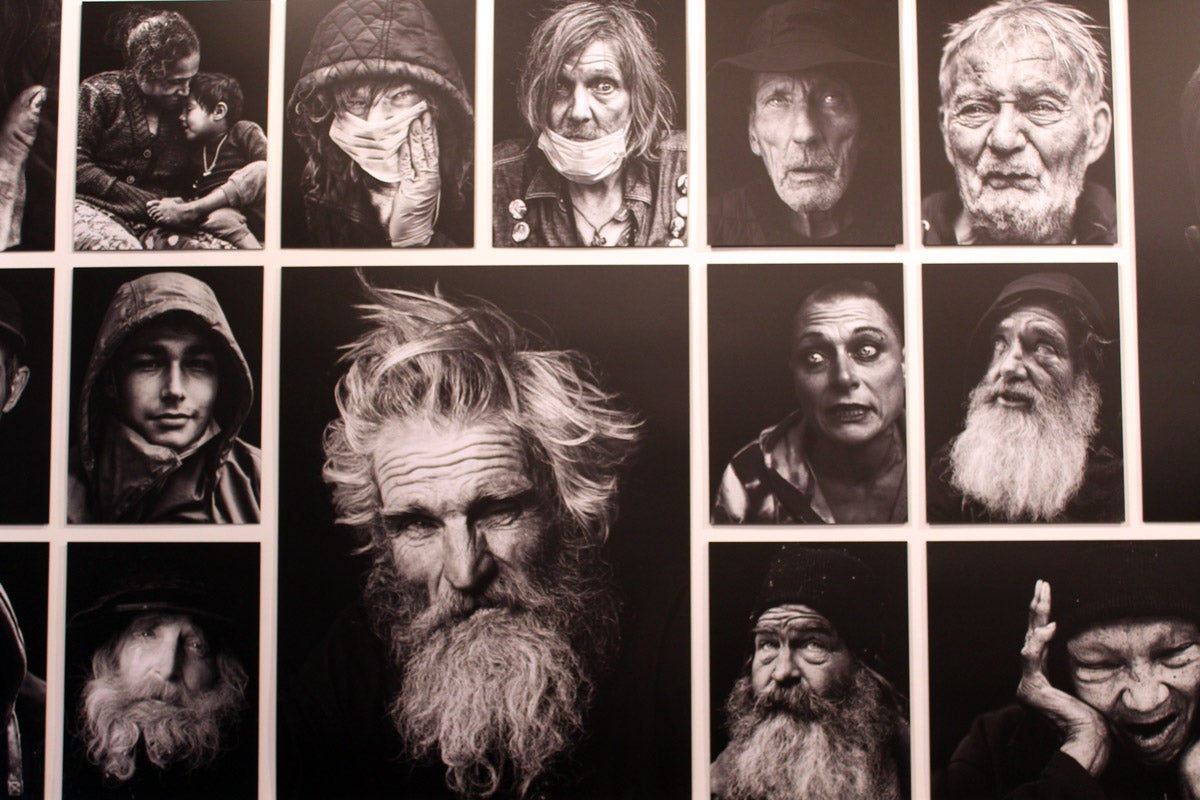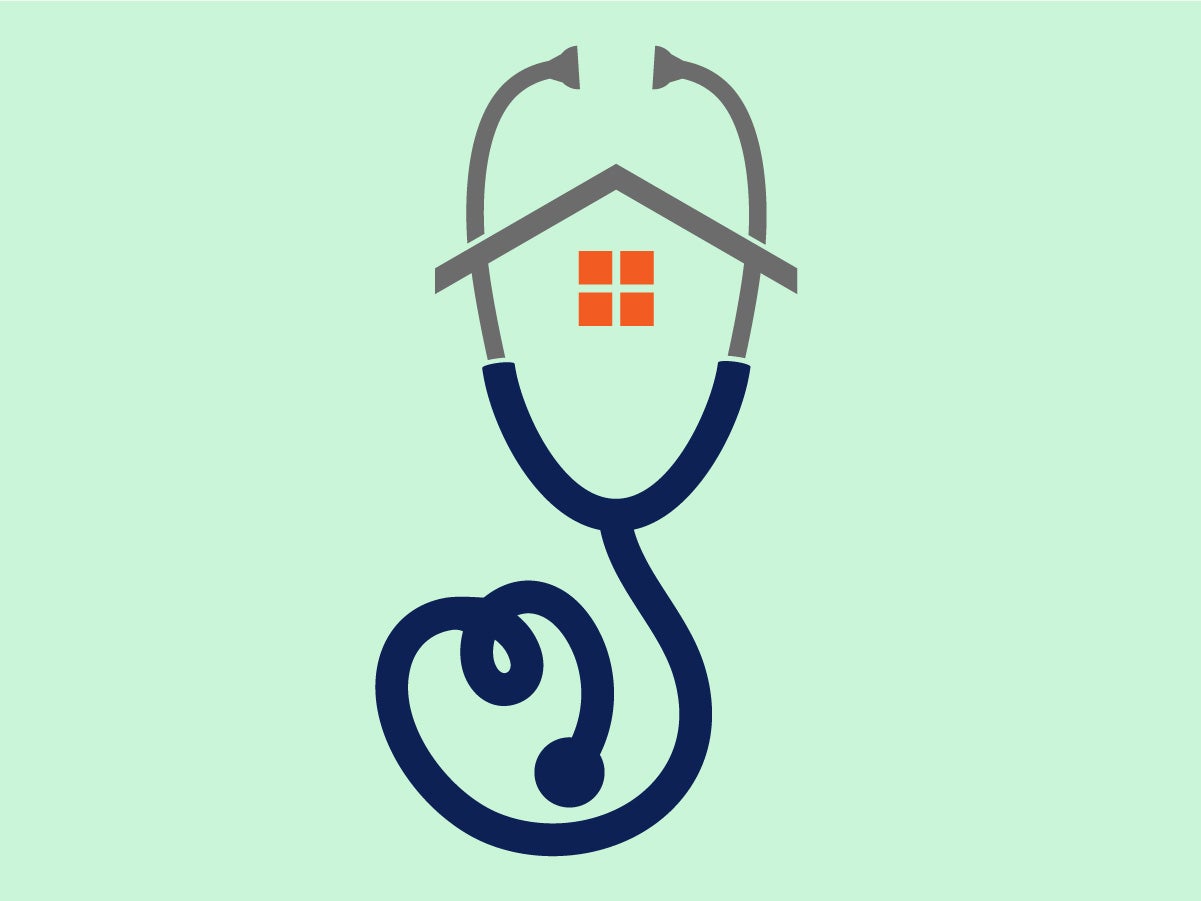
Feature
A Shot in the Arm
Maurice Hilleman woke suddenly. It was near 1 a.m. on March 23, 1963, when his 5-year-old daughter, Jeryl Lynn, tottered into the bedroom and announced that she was feeling unwell. Her throat was swollen, and she was hot with a fever. Hilleman, an esteemed microbiologist—who, over the course of his career, would develop more than 40 vaccines that would save millions of lives—made an educated guess that she was sick with mumps. As a father, he saw a sick daughter he wanted to help. As a scientist, he saw an opportunity he didn’t want to miss. He got out of bed, jumped in his car, and cruised off in the middle of the night to his laboratory in the Philadelphia offices of the pharmaceutical company Merck. A little while later, he returned home with a few cotton swabs and a vial of chicken broth. He woke Jeryl Lynn, swabbed her throat, placed the samples in the chicken broth to keep the virus alive, and returned to his office to freeze the sample.
Four years later, in December of 1967, the U.S. Food and Drug Administration (FDA) licensed Merck’s mumps vaccine, made from the aptly named Jeryl Lynn strain of the virus. It was the fastest a vaccine had ever been made from scratch and approved in the U.S. “A remarkable achievement,” says Jaap Goudsmit, chief scientific officer of the Human Immunomics Initiative (HII), a recently launched joint project between the Harvard T.H. Chan School of Public Health and the Human Vaccines Project, a nonprofit vaccine research initiative. “That world record stood until COVID-19 came along.”
Sign up for Harvard Public Health
Delivered to your inbox weekly.
Goudsmit, a bespectacled MD-PhD who hails from the Netherlands, is one of eight scientists who are part of the COVAX Independent Product Group, an effort spearheaded by Gavi, the international public-private partnership focused on vaccines, and the World Health Organization to steer billions of doses of a COVID-19 vaccine to low- and middle-income countries. To stay on top of the immense scientific progress being made, he starts every morning around 6:00 by logging on to medRxiv and bioRxiv, digital repositories where preprints of studies pertaining to COVID-19 are uploaded daily to expedite research efforts. He then prints out all the new studies he’s interested in and starts reading. Goudsmit’s primary focus with HII is on immunity and vaccine response among elderly populations, an issue that is poorly understood but of critical importance in the presence of an airborne virus that’s disproportionally killing people ages 65 and over. The volume of science being published on COVID-19 and the speed at which it’s moving are unprecedented, Goudsmit says. So are the challenges ahead, from supply-chain struggles to ensuring equitable distribution to fine-tuning our understanding of the immune response the vaccines generate.
“This is a watershed moment for vaccines and a great victory for public health.’’
jaap goudsmit, chief scientific officer of the human immunomics initiative
The COVID-19 pandemic has sparked a wholesale reassessment of public health and illuminated barriers to vaccine research and development (R&D). It has cast a light on the risk-averse, profit-oriented agendas of drug makers that have led to a drop-off in traditional vaccine R&D investment, and it has exposed the dangerous tendency of governments around the world to remain reactive rather than proactive in the face of emerging health threats.
While vaccines are among the most potent tools of public health, in the last two decades they have been one of the most maligned frontiers in medicine. The fate of a COVD-19 vaccine could rectify that imbalance and shape public opinion and influence industry and government research priorities for years to come. The scientific, economic, and sociopolitical obstacles to overcome are huge. But so are the opportunities. “This is a watershed moment for vaccines and a great victory for public health,” Goudsmit says. “We may have entered an era where adult and elderly vaccination becomes as much an established public health measure as childhood vaccinations. We’ve never seen anything like this.”
An insider’s view
Over the last 35 years, Goudsmit has published more than 500 papers and has worked on developing vaccines and monoclonal antibodies for rabies, HIV, West Nile virus, and influenza, among other diseases. He was the founding chair of the Scientific Advisory Committee to the International AIDS Vaccine Initiative and co-founder of the European AIDS Vaccine Initiative. His career spans private industry, the nonprofit sector, and academia, and each professional perch he’s alighted on has provided new insights into the multilayered complexities of vaccine development—challenges that have only been amplified in the 21st century.
In 2003, Goudsmit became chief scientific officer at Crucell, a Dutch biotech firm that specialized in vaccines. That same year, the virus that causes severe acute respiratory syndrome (SARS) jumped across 26 countries, infected 8,000 people, and killed 800. The world was on edge, and “we felt an enormous sense of urgency,” Goudsmit recalls.
He and his team got to work and in two years successfully developed two antibodies that neutralized the virus when tested in vitro. The problem was, nobody needed a SARS vaccine by that point. The virus had been contained and stamped out, and in the absence of a market, the company shelved the program. The antibodies were relegated to journal articles and intellectual property filings, a sort of scientific purgatory that’s home to hundreds of other vaccine candidates that have shown promise in the laboratory against myriad diseases, including pneumonia and malaria, but have never been put through the long and expensive process of clinical testing.
At Crucell, Goudsmit worked on dozens of other projects, including one with Dan Barouch of Harvard Medical School to develop a platform that’s been used to develop and produce an Ebola vaccine, is in advanced testing against HIV, and underpins a COVID-19 vaccine candidate from Janssen Pharmaceutical Companies of Johnson & Johnson.
Still, in a wry tone, Goudsmit points out that the only vaccine of his to be licensed during his tenure at Crucell was a West Nile virus vaccine administered to geese (emphasis his) on commercial foie gras farms in Israel. It’s his way of saying that the road to any vaccine is littered with scientific potholes and the perilous detours of market forces.
In the face of these challenges, Goudsmit says, the progress the world has made toward a COVID-19 vaccine is astonishing. The genetic sequence of SARS-CoV-2, the virus that causes COVID-19, was published in early January 2020, and a mere two months later, the first vaccine was being tested in humans. As of mid-November, more than 130 vaccine candidates had been identified and were in various stages of testing, including 11 in large-scale Phase 3 trials that are typically the final step before regulatory approval. Drug companies Pfizer and Moderna reported early Phase 3 data indicating that their experimental vaccines are more than 90 percent effective. Maurice Hilleman’s record for fastest vaccine development was toppled by years.
At the same time, there have been damning missteps and periods of myopia in recent decades that have left the U.S.—and the world—flat-footed in the face of the most significant public health threat of our time. We need a safe, effective vaccine for COVID-19. But we also need to learn from our history so that we can fully leverage the powers of vaccines to improve global health and ensure that we’re not left playing catch-up when the next pandemic arrives.
“There has been so much rapid innovation as a result of COVID-19,” Goudsmit says, “but innovation alone doesn’t guarantee that we will get the results that we want or that we need.”

Photo by Bearwalk Cinema
Industry Withdrawals
Vaccines are one of the greatest success stories in the history of public health. They have saved tens of millions of lives, prevented untold human suffering, and protected entire communities by fostering herd immunity to pathogens when a large enough proportion of people are resistant to contagion.
The health benefits of vaccines are also linked to massive economic benefits. One recent study in Pediatrics, for example, modeled the potential health and economic impact of routine vaccines in the U.S. The study, which analyzed a hypothetical birth cohort of 4.2 million infants and followed them through their hypothetical death, estimated the vaccines prevented 42,000 early deaths and 20 million cases of disease, resulting in a net savings of $68.8 billion in total societal costs, including loss of productivity from premature death and costs that parents incur for missing work to care for their sick children.
The list of known and emerging benefits of vaccines is long and getting longer. And yet, the story of commercial vaccine development in the 21st century is a story of contraction and abandonment.
There are other benefits of vaccines that we’re only starting to explore. A recent series of articles in Proceedings of the National Academy of Sciences (PNAS) highlighted how vaccines could slow the surge of antimicrobial resistance by preventing the transmission of drug-resistant infections, which are estimated to kill about 700,000 people a year. Vaccines likewise reduce the use of antibiotics and other anti-infectives, which eases the evolutionary pressure on microbes to forge resistance in the first place.
In that same PNAS series, papers co-authored by Marc Lipsitch, professor of epidemiology and director of the Center for Communicable Disease Dynamics, and Christine Tedijanto, PhD ’21, who works closely with Lipsitch, indicate that vaccines help protect the microbial diversity of the microbiome, which mounting evidence suggests improves immune-system function.
All this is to say that the list of known and emerging benefits of vaccines is long and getting longer. And yet, the story of commercial vaccine development in the 21st century is a story of contraction and abandonment. In the heyday of giants like Jonas Salk, developer of the polio vaccine, and Maurice Hilleman, public and private investment poured into vaccines.
Most vaccine research over the latter half of the 1900s focused on infectious diseases and fit within the model of vaccinating millions of healthy kids to protect them against childhood diseases that have historically killed and harmed millions of children.
“Research in that space has definitely contracted, with a few disease-specific exceptions,” says Sarah Fortune, John LaPorte Given Professor of Immunology and Infectious Diseases and chair of the Department of Immunology and Infectious Diseases. “And it’s contracted because there have been some really big failures. All the low-hanging fruit, so to speak, was covered by early vaccine development.”
In 1967, the year Hilleman’s mumps vaccine was approved, there were 26 companies making vaccines. By 2000, only nine large companies were developing and manufacturing vaccines, and that number had dropped to just four as of 2019, according to a Nature article co-authored by David Bloom, Clarence James Gamble Professor of Economics and Demography.
That same article noted that there are approximately 240 vaccine candidates in the development pipeline for diseases that affect middle- and low-income countries. Many of these candidates are likely to remain stuck in Phase 1 testing because companies don’t anticipate profit margins big enough to justify the huge investments in money and time necessary to take the candidates into the “formidably challenging” second phase of research.
“Many of the diseases that remain have turned out to be very biologically complicated,” says Fortune, “and for these diseases, it’s been really hard to make vaccines that are effective and will not do any harm to the healthy people, often children, receiving them.”
Among the most prominent failures Fortune mentions was a vaccine developed by the pharmaceutical company Wyeth to fend off rotavirus, which causes days of vomiting and diarrhea in infants and young kids and is estimated to kill approximately 200,000 children annually, most of whom are in low- and middle-income countries. The vaccine passed through Phase 1, 2, and 3 clinical trials before being licensed by the FDA for use in infants in August 1998 and recommended by the American Academy of Pediatrics. Not long after it was rolled out in the U.S., however, several cases of intussusception—a serious condition in which the bowel telescopes in on itself—were reported through the Vaccine Adverse Event Reporting System (VAERS).
In the weeks and months after, reports of intussusception ticked up, and by October 1999, 101 presumed and confirmed cases had been logged in the VAERS. Of those, at least 52 patients required surgery, nine required bowel resection, and one died. Importantly, preapproval data of the vaccine from clinical trials in the U.S., Finland, and Venezuela showed no statistically significant difference between vaccinees and placebo recipients in the rate of intussusception. In October 1999, the Advisory Committee on Immunization Practices withdrew its recommendation of the vaccine, and Wyeth pulled it from the market.
It was a lose-lose situation for patients, industry, and science. The prospect of investing tens of millions of dollars to take a vaccine from a lab bench to market only to have to pull it eight months later in light of newfound risks had a chilling effect on pharmaceutical investment. The reputational, legal, and financial risks of being the company whose vaccine harmed young children were too great, and R&D investment dwindled, shortchanging global health and infectious-disease research.
Swift Science
January 11, 2020
China shares the genetic sequence of SARS-CoV-2
January 13
Scientists from NIH and Moderna design an mRNA vaccine based on the sequence
March 16
First participant is dosed in Phase 1 study of Moderna vaccine mRNA-1273
May 5
First participant is dosed in Phase 1|2 study of Pfizer/BioNTechmRNA vaccine BNT162b2
May 12
Moderna receives FDA Fast Track designation for mRNA-1273
July 13
Pfizer/BioNTech receive FDA Fast Track designation for BNT162b2
July 14
New England Journal of Medicine publishes preliminary data from Moderna’s Phase 1 study
July 27
Both Moderna and Pfizer/BioNTech announce launch of Phase 3 studies of respective mRNA vaccines



